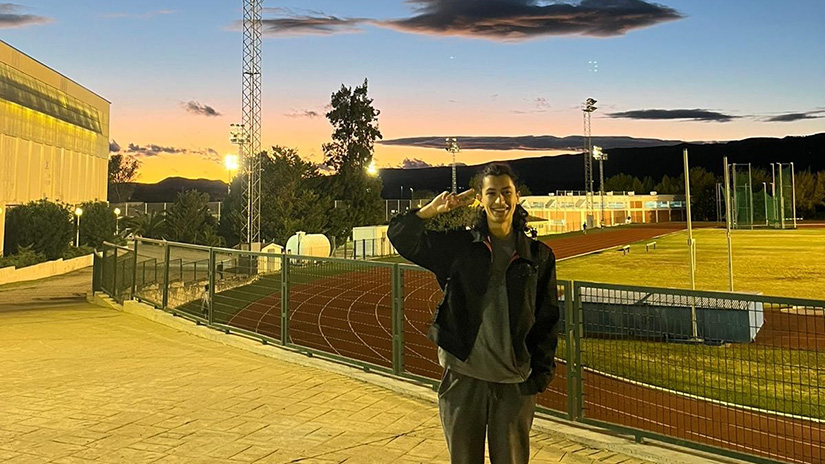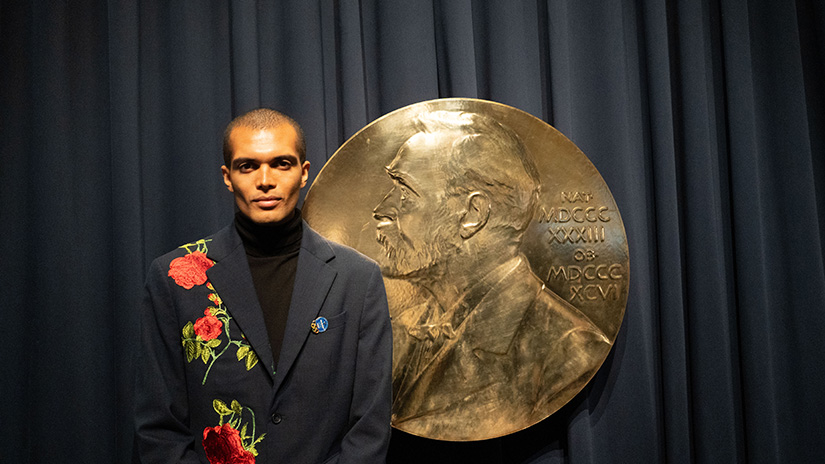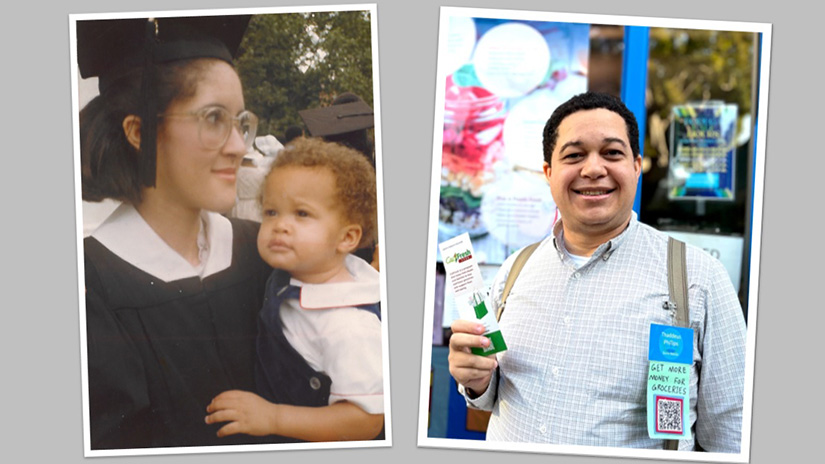
Computer science major Aldo Barrera is taking a gap year between the avenues of supportive opportunity opened up at Santa Monica College — including SMC Promise, which offers two years of free tuition to eligible students — and his university transfer to pursue a different learning path as a language assistant in Spain. He currently teaches English to nearly 200 students in grades 2-6 in Ontinyent, a municipality near the city of Valencia. His duties also include serving as a cultural ambassador to help build mutual understanding between countries.
“Being at this school makes me feel like I’m really doing something important,” Aldo says of his posting, which comes through the North American Language and Culture Assistants Program (NALCAP), an initiative of the Embassy of Spain’s Education Office. In the paid position, which lasts through May, he works under the guidance of local teachers.
Aldo first learned about the program from SMC Professor of Spanish Alejandro Lee, who had him as a student in Spanish 11 for native speakers. “He told me about NALCAP, what an amazing opportunity it was,” Aldo recalls.
At the time, Aldo felt conflicted about applying to the program, especially when his transfer to the University of Southern California was accepted. “It was a hard decision to make,” says Aldo — especially since he is a first-generation college student wanting to make the most of his academic options. But Alejandro pointed out that Aldo could always apply to NALCAP and decide later whether he wanted to take part.
So with Alejandro’s support in writing a statement of purpose, plus a recommendation letter from Professor of Philosophy Paul Klumpe, Aldo submitted his application. Paul even had Aldo make a presentation in class to bolster his confidence in speaking before a large group. “I was nervous, but it was a lot of fun,” Aldo recalls.
Building Fluency
Choosing Spain meant that “I had to decline the USC admission, unfortunately,” Aldo says. But he will reapply to USC next year — having added the NALCAP cultural ambassadorship to his résumé. At the university, he wants to major in Intelligence and Cyber Operations, a degree fusing computer security with a focus on international relations.
Aldo was building skills in the former through SMC and help from Senior Career Services Advisor Joan Kang. She connected him an internship at LA-Tech.org, which led to a cybersecurity certification from the technology giant Cisco. Aldo also became a technology professional intern for Los Angeles County, gaining another cybersecurity certificate from Google. In addition, he earned further experience offering technology assistance for older adults at the Culver City Library.
Meanwhile, his teaching assistantship in Ontinyent is providing real-world experience in international relations, as he interacts with people from a different country and culture.
Although fluent in Spanish, Aldo is learning the region’s primary language of Valencian to converse with his new neighbors. “It’s a hard language for me to understand, despite having similarities to Castilian Spanish,” he admits. But his fluency is improving, even as he instills English language skills in his students.
Fulfilling Promise
In addition to its academic preparation, supportive faculty and high transfer rate to notable universities, SMC offered Aldo another significant inducement to attend: reasonable costs and tuition assistance. “College can be expensive, because you’re not only paying for books and materials but also taking time away from working,” he notes.
The two years of free tuition he received through SMC Promise was especially vital since Aldo’s two brothers are in college as well. His older brother attends California State University, Northridge, while his younger sibling is studying at SMC — and also benefiting from SMC Promise. “It has definitely lifted a financial burden from my parents,” Aldo says of the program.
Aldo then covered the tuition for his remaining time at SMC through a California Community Colleges Promise Grant. “I kept sharing with my family and anybody I knew who was thinking about higher education that community college is a great option,” Aldo says. “Even if you weren’t an honor roll student in high school, you can become one at a community college and then transfer to a great university.” Beyond building academic expertise at SMC, Aldo has served as vice president and webmaster of the honor society Phi Beta Kappa.
With an increasing online world, Aldo will never lack for opportunities in keeping people and systems safe from hackers as a cybersecurity professional. But even though the internet might seem to be compressing the distance between nations, he knows that the virtual realm will never overtake the advantages of personal human contact in building mutual understanding.
As he acclimates to a different country and gets to know his students, colleagues and neighbors, Aldo already finds the experience rewarding. “I've been enjoying every day,” he says, noting that his classes are especially interested in learning more about Los Angeles. “I’ve shared with them about many popular places” — including his own favorites such as El Matador State Beach in Malibu and Little Tokyo in Downtown L.A.
“It’s safe to say that many hands are raised,” Aldo says of his students as he continues sparking — and satisfying — their curiosity about his homeland.
* * *














